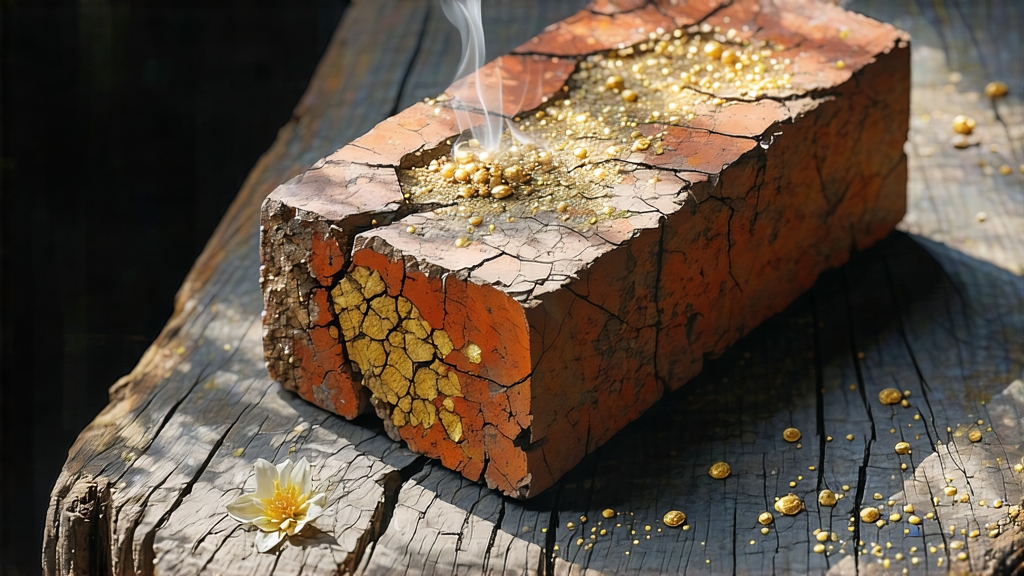
When most tea lovers outside China hear “black tea” they picture the coppery, fully oxidised leaves that British teapots made famous. Yet inside China the same leaves fall under the category “red tea” (hong cha), while the true “black tea” (hei cha) is a post-fermented, slow-aged creature of microbes, time and terroir. Among the six major hei cha families—Hunan Fu Zhuan, Hubei Qing Zhuan, Sichuan Nanlu, Yunnan Pu-erh, Guangxi Liu Bao and Anhua Dark—none carries a more vivid passport of flavour, medicine and Silk-Road romance than Fu Zhuan brick tea from Hunan province. Compressed into hard black rectangles that once rattled across caravan saddles, Fu Zhuan marries the savoury depth of forest floor with the surprising sweetness of dried longan, and hides inside its fibres a microscopic golden constellation called “golden flowers” (jin hua). To understand this brick is to hold a living encyclopaedia of Chinese microbiology, ethnic trade routes and gongfu patience.
Historical caravan trails
Fu Zhuan first appears in county annals during the late Ming (1368-1644), when the imperial court tightened tea-horse trade regulations. Merchants in Yiyang and Anhua counties began steaming loose dark tea, packing it into bamboo husks and compressing it under stone slabs to survive the 2,400-km journey to Lhasa and beyond. The bricks travelled west with salt and silk, east with Tibetan warhorses, and north with Mongolian furs. Along the way, seasonal humidity and friction inside yak-skin saddlebags inoculated the tea with airborne fungi. By the time caravans reached the Qinghai plateau the leaves had darkened further, acquiring a mellow, hay-like aroma that nomads prized for digesting yak butter and high-altitude barley. In 1820 a brick stamped “Fu” (blessing) and “Zhuan” (brick) won tribute status; the name stuck, and the city of Jishou became the official production seat under the Qing Board of Trade. Today the State Council lists “Hunan Fu Zhuan Making Skills” as National Intangible Cultural Heritage, and the bricks are again riding trains along the new Belt & Road, this time bound for Central Asian bazaars and Parisian wine cellars.
Micro-terroir: mountains, rivers and microbes
Authentic Fu Zhuan can only be manufactured within a 50-km radius of Yiyang city, where the Zi River’s mist veils granite peaks and the average humidity hovers at 78 %. The mao cha (rough tea) comes from Yuntaishan large-leaf cultivar, a late-budding landrace rich in polyphenols and pectin. Local soil is slightly acidic, laced with selenium leached from tungsten mines; the element later encourages the growth of Eurotium cristatum, the dominant fungus responsible for golden flowers. Because the region sits at the intersection of subtropical and north subtropical climate belts, day-night temperature swings in April and October exceed 10 °C, prompting the leaves to stock up on aromatic amino acids. In short, Fu Zhuan is impossible to replicate in a Guangdong or Kerala factory; the spores simply refuse to bloom with the same lemon-yellow vigour.
Crafting the brick: seven steps from leaf to lattice
- Pan-fire kill-green: Freshly picked one-bud-with-three-leaves are tossed into 280 °C woks for three minutes, deactivating oxidative enzymes while preserving a grassy core.
- Rolling & sun-withering: The hot leaves are immediately rolled for 25 minutes to rupture cell walls, then spread on bamboo mats under late-autumn sun for six hours, reducing moisture to 45 %.
- Pile-fermentation (wo dui): The semi-dry leaves are heaped into 1.5-metre mounds, sprayed with Zi River water and covered with wet linen. Inside the pile temperature climbs to 55 °C over seven days; thermophilic bacteria convert catechins into theaflavins and gallic acid, laying the groundwork for future fungal bloom.
- Stacking & “flowering” (fa hua): After drying to 18 % moisture, the mao cha is steamed for 30 seconds, then packed into brick-shaped wooden molds lined with breathable cotton paper. Workers add a proprietary “mother brick”